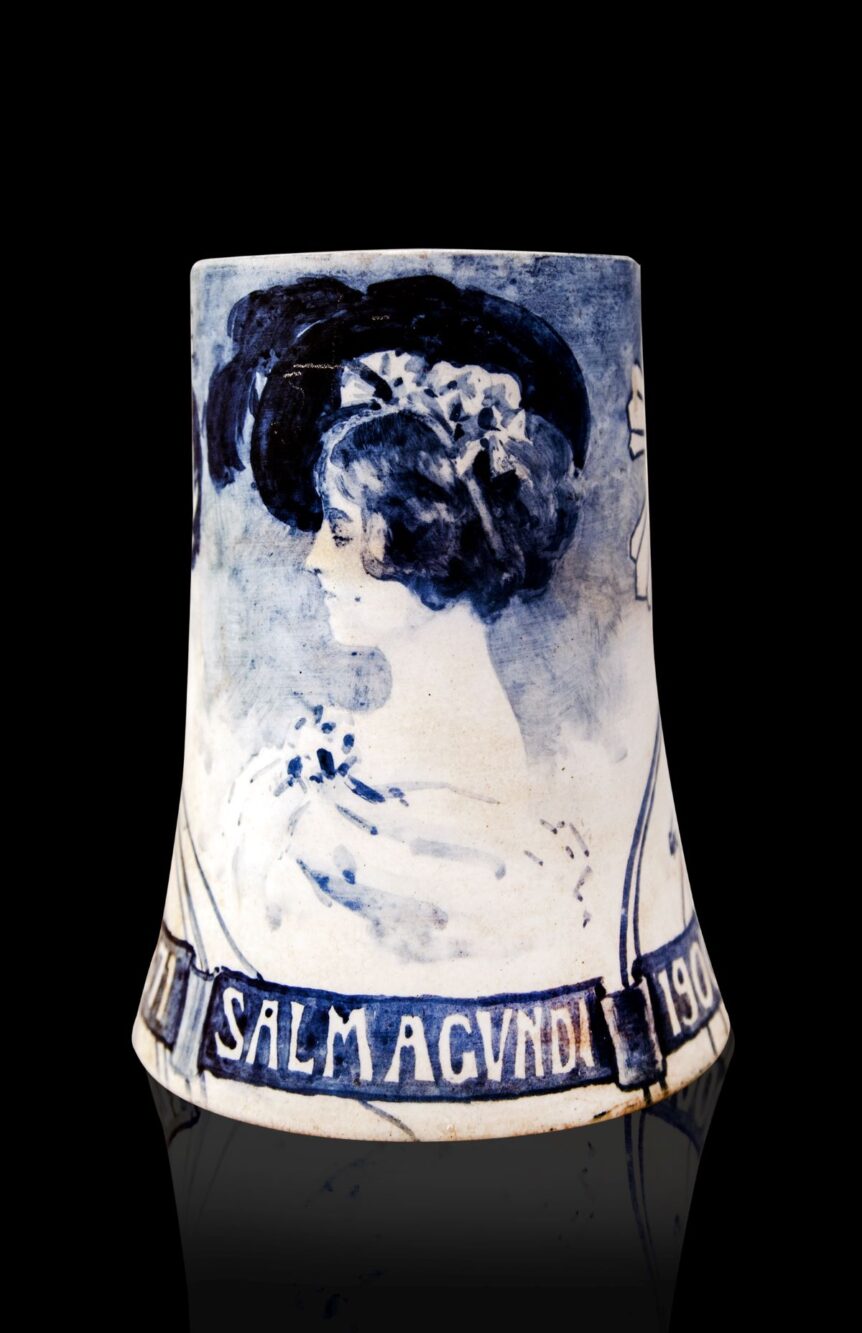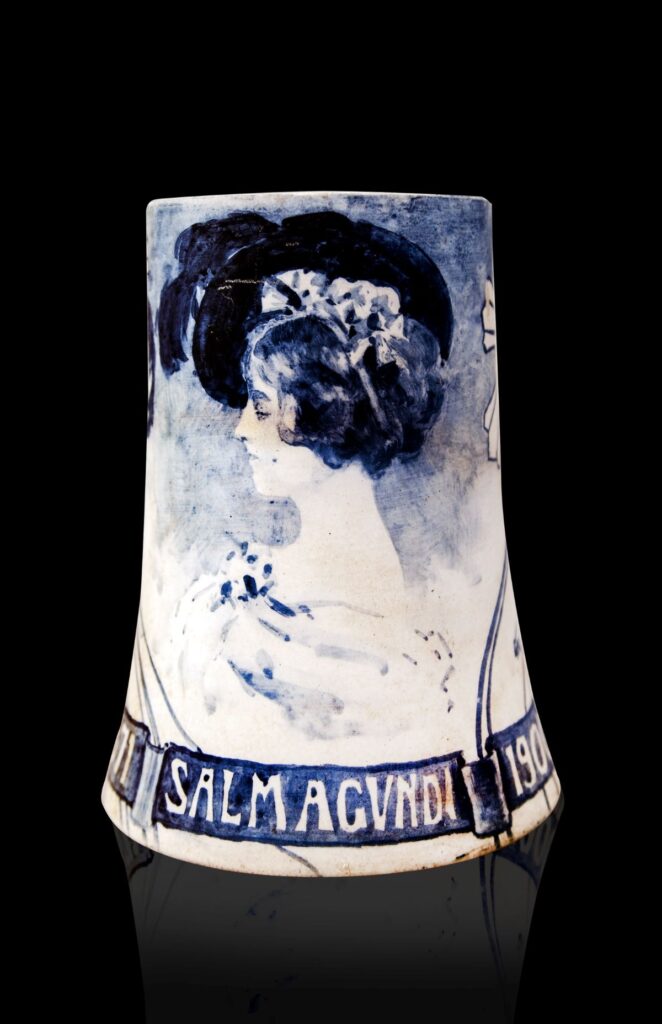
Twenty years after a group of artists established the Salmagundi Club in 1871 as a place to sketch and socialize together, the members inaugurated the club’s library. Ever since, the Salmagundi Library has been a prized resource and a signature part of the club experience. For early artist-members in the nineteenth century, the library most essentially provided important visual references for the making of illustrations for pre-photography magazines and newspapers.
During the twentieth century, the Salmagundi Library expanded its mission, hosting educational lectures, dinners, auctions, and other events that brought together membership and local community within its intimate confines. The Salmagundi Library was started with a nucleus of books contributed by members, including a donation of books from John La Farge’s estate. The collection today contains approximately fifty-eight hundred volumes, most of them dating from before 1923. These continue to be a valued source of images that are now in the public domain. The bulk of the library books dating from the 1880s to the 1910s are printed on acidic paper, which unfortunately renders them quite fragile.
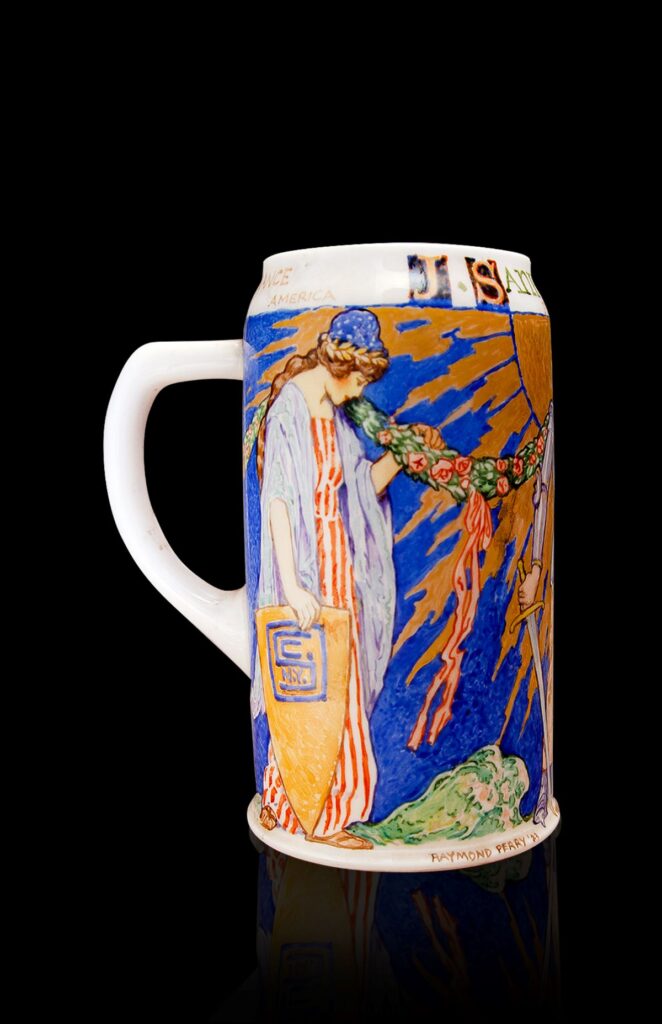
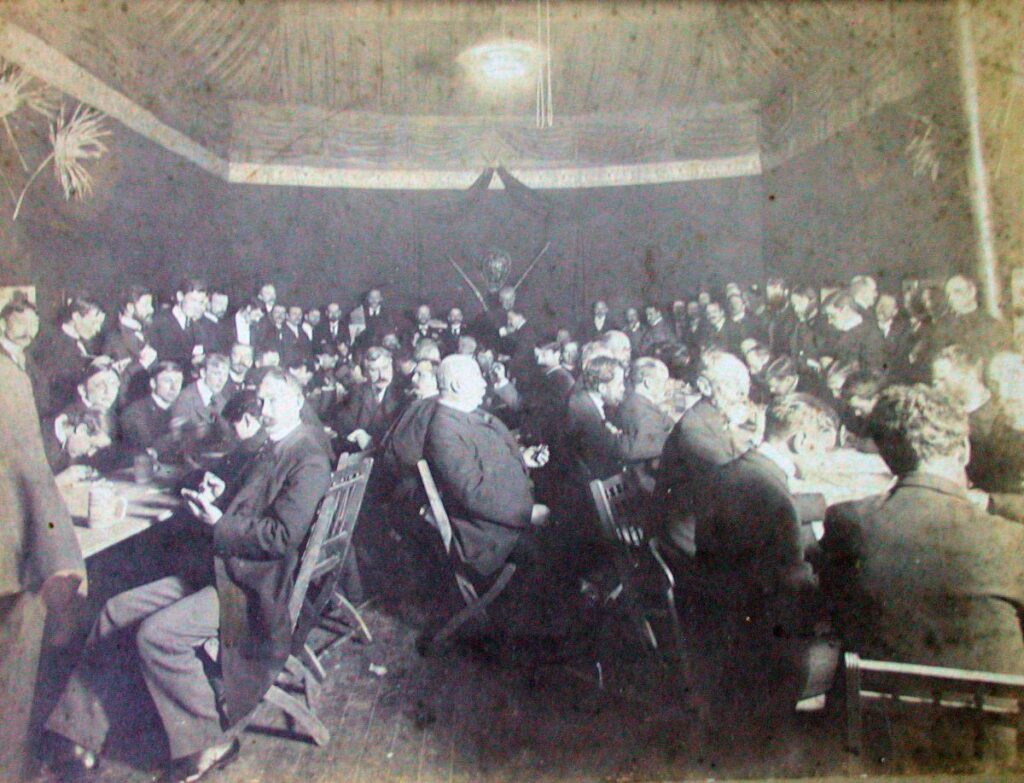
Long before paper conservation issues were a concern, the Salmagundi Library found itself in need of resources for its maintenance. In 1899 William H. Shelton (1840–1932), the club’s librarian, instituted an unusual fundraising scheme that would become the custom of the club: to sell twenty-four ceramic mugs decorated by artist-members at auction each year. The earliest decorated mugs—which are not considered steins as they do not have a cover—featured imagery painted in Delft blue; colored compositions came later. Each mug was signed by the artist, numbered, and registered in the library, prior to an auction sale held in conjunction with an annual dinner. Every mug is one-of-a-kind.
The group of twenty-four fine artists who were given the honor of creating the ceramic mugs for the inaugural 1899 sale were F. McIntosh Arnold, William Verplank Birney, Carle Blenner, George Elmer Browne, E. Irving Couse, Louis Paul Dessar, William H. Drake, William Crothers Fitler, Leigh Hunt, Henry Mayer, Robert C. Minor, William C. Ostrander, William S. Robinson, Mathias Schlesinger, William Henry Shelton, Walter Shirlaw, Roswell M. Shurtleff, Thomas A. Sindelar, DeCost Smith, Walter Granville-Smith, George L. Taylor, Charles Volkmar, Edward E. Winchell, and William J. Whittemore.
Many Salmagundi Club members were also members of the Tile Club—a nineteenth-century New York artists association dedicated to the decorative arts—and often the painting of tiles and ceramic mugs were done in conjunction by the two clubs. The final members’ dinner of the Tile Club was held at the Salmagundi Club on February 2, 1904, and the signed menu is still in the Salmagundi Club’s collection.
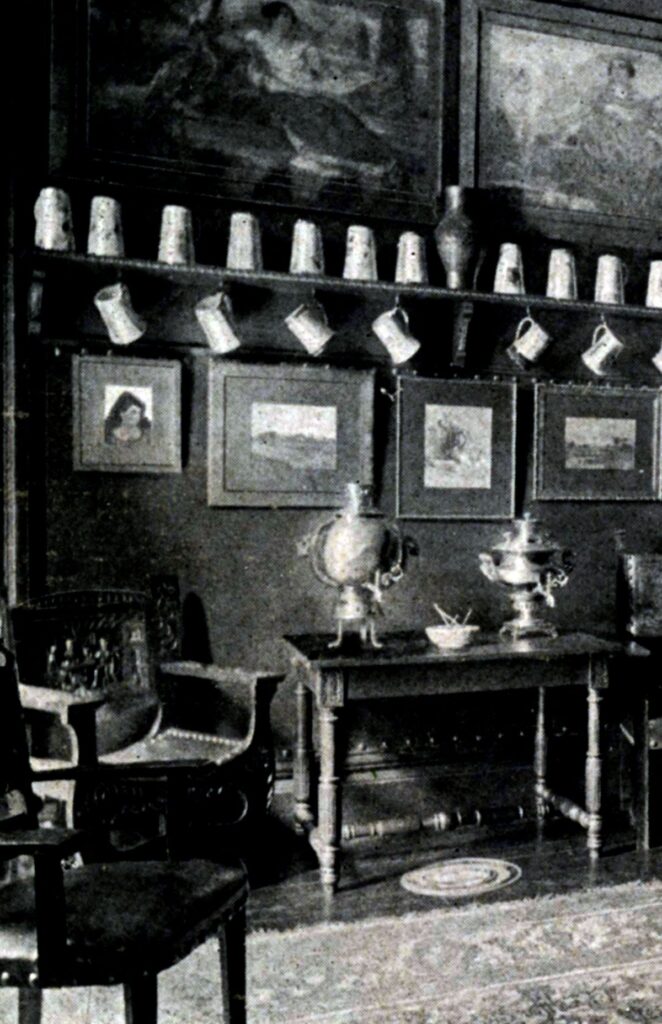
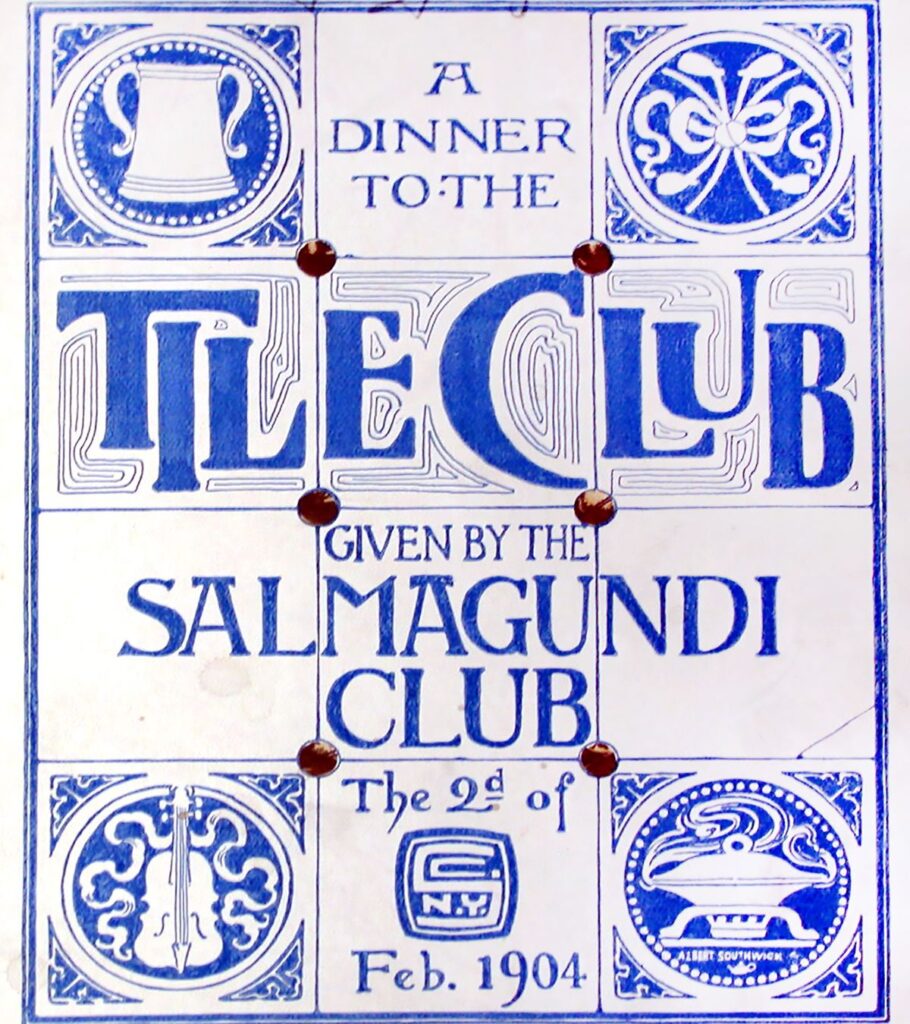
Salmagundi artist-member Charles Volkmar ran a ceramics factory and produced the mugs for the club until his death in 1914, after which they were provided by the Lenox Pottery. Artist-members carried on the practice of decorating mugs until 1924, with some six hundred produced in total. Over the years, some of the mugs have been bought back by members and donated to the club to preserve these important artifacts of its history. The club currently owns approximately one hundred examples.
Today Salmagundi library mugs can sometimes be found for sale in public auctions, where they fetch prices ranging from approximately $500 to $5,000. For example, a mug decorated by artist William Herbert Dunton with a depiction of a cowboy riding a bucking bronco recently sold at a Maryland auction house for $1,000. Of course, the art-historical significance of the mugs far outweighs their monetary value. If you would like to donate an artist-decorated mug to the Salmagundi Club collection, we would be very pleased to speak with you.
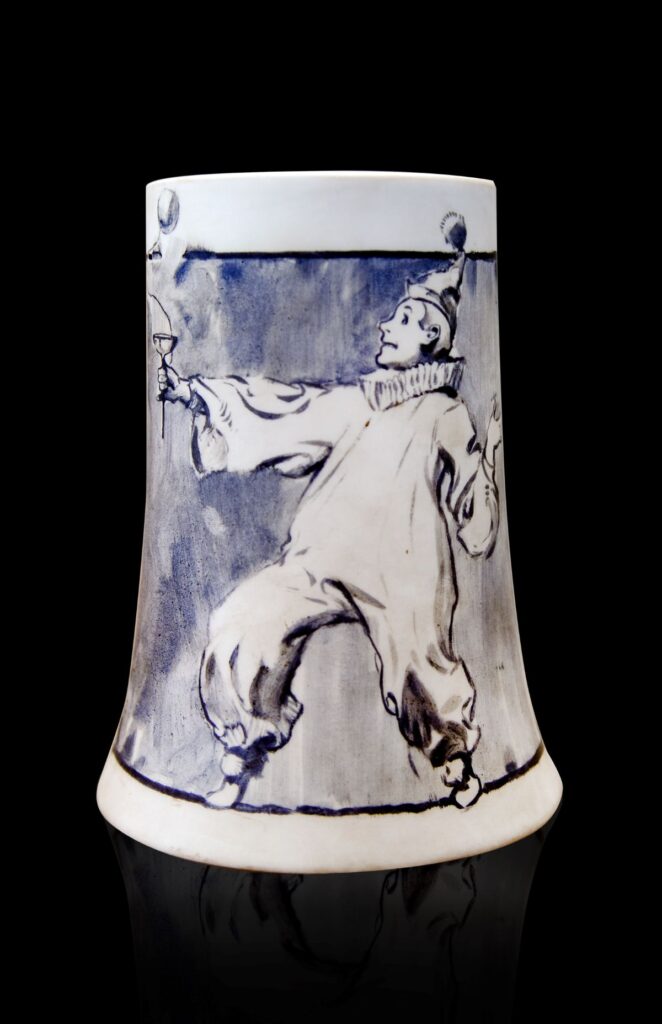
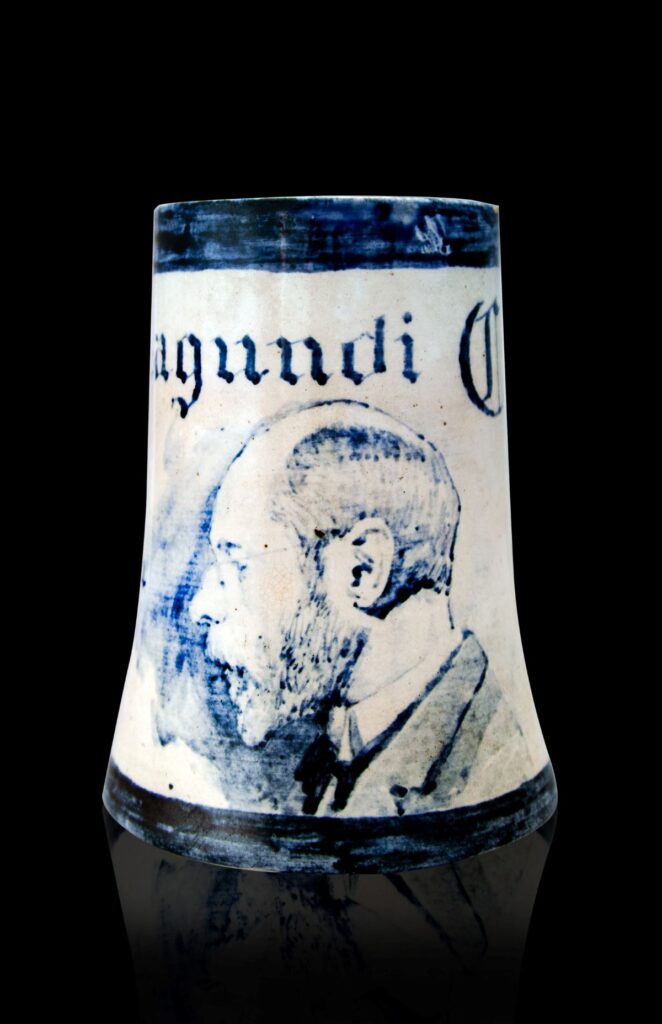
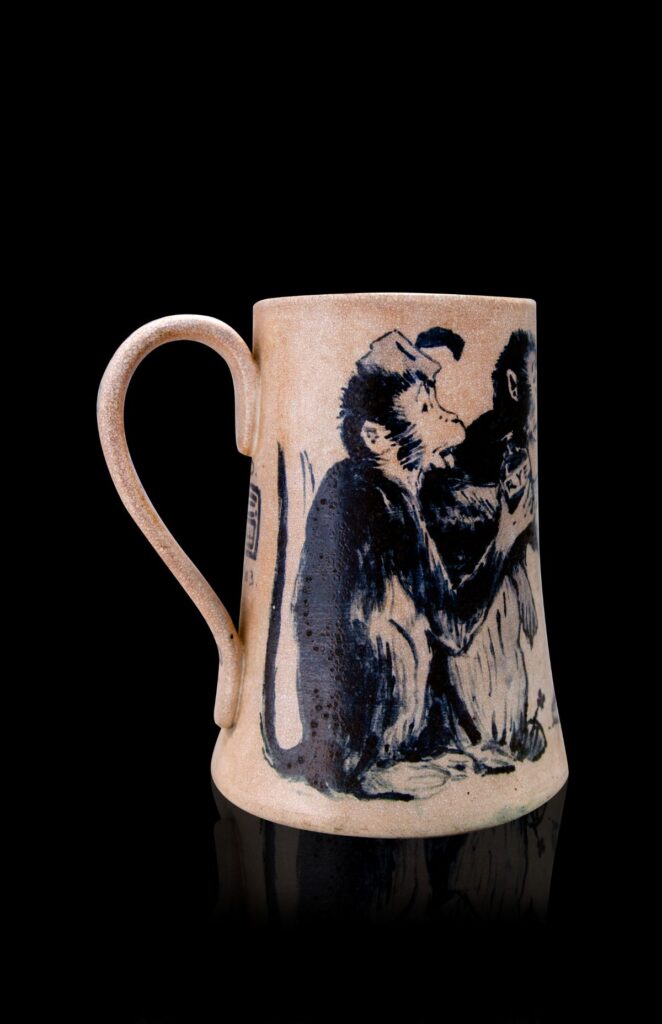
ALEXANDER KATLAN is the chair of the Salmagundi Club library committee and has been a painting conservator for more than forty years. WILLIAM ERIC INDURSKY is the chair of the Salmagundi Club curators committee and executive director of the club.

